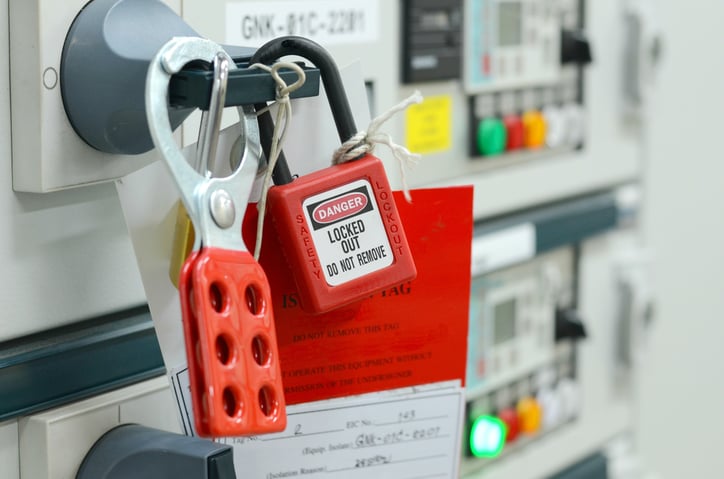As it pertains to employee health and safety, not all industries are created equal. In fact, not all workplace tasks are created equal. This is why there are restrictions on companies performing certain tasks without a permit. All of this relates to regulatory compliance, which plays a key role in protecting employees while they work. Since this is something that no company can afford to overlook, let’s take a closer look at permitted work, including tools that can help businesses manage these regulations properly to avoid costly interruptions.
Why PTW Is Needed
A permit to work (PTW) is required in a variety of industries. They are needed primarily in industries where the work being performed is inherently dangerous and comes with health and safety hazards. Industries like manufacturing and construction are obvious examples of this, but there are dangerous work environments in several other industries that also require a PTW.
The idea behind them is to gather more information about a specific work environment and the potential dangers it presents to workers. They require a lot of documentation, including risk assessments, instructions, training, and adjustments workers must make to stay safe. In short, the goal of a PTW is to collect information so that employers, workers, and any regulatory agencies can all be on the same page regarding why a work environment is dangerous and what can be done to help protect workers.
Work That Requires a Permit
Naturally, part of the challenge with PTW is determining what can be defined as a major hazard that should require a PTW. It’s not always clear what types of jobs or working conditions reach the point of requiring a permit to work. However, common sense should prevail at a certain point and make it obvious that working conditions should require clear documentation regarding employee safety.
Of course, there are several obvious examples of situations in which a PTW is necessary. Here are some of the most common types of work permits.
Cold Work
For those unfamiliar with it, cold work doesn’t refer to employees working outdoors during the winter. Rather, it’s a blanket term for a variety of dangerous jobs that don’t involve fire or any type of ignition to perform. In some cases, it can be as simple as jobs that require heavy lifting. However, cold work can also refer to jobs like scaffolding or chemical cleanup. Some of these jobs are simple tasks but do present clear and obvious danger.
Hot Work
Meanwhile, hot work refers to jobs that require ignition or fire. Needless to say, this type of work creates an obvious safety hazard for employees. To get a PTW, employees must go through proper safety training to ensure a keen understanding of working with fire in a safe manner and know the proper safety protocols to follow.
Confined Spaces
There should always be concern for the health and safety of employees when they work in confined spaces. Even if an employee isn’t afraid of enclosed spaces, there are additional safety concerns that usually aren’t present with other jobs. Working in certain vessels or tanks are considered confined spaces, as do jobs performed underground, in a tunnel, or a canal. Therefore, far more jobs than you might think require a PTW because they take place in a confined space.
Electrical Work
It shouldn’t be hard to explain why electrical work should require a PTW. There is virtually no way to eliminate the risks involved while working closely with electricity. The permit is to make sure those risks are mitigated as much as possible. Employees working with electricity need to make sure they take a careful and organized approach to this type of work.
Lock Out Tag Out (LOTO)
Lock-out/tag-out procedures are inherently complicated, which is why a PTW is required. The caveat is that LOTO work is required in a variety of industries. Virtually any business using large equipment or machinery needs LOTO work done. Therefore, many companies need to get a PTW for this task in order to ensure that these complex and dangerous inspections can be performed in a safe manner.

Radioactive Materials
Hopefully, it’s obvious why working with radioactive materials would require a PTW. Of course, any employee working with these types of hazardous materials will be safe and careful. But the consequences if there is an accident can be so severe that there is no need to take any chances. A PTW will provide an extra layer of protection that employees who work with radioactive materials have been fully trained on how to do this work safely to protect themselves and countless others.
Working at Heights
While working at heights is common throughout the construction industry, it can be found in other places as well. Any business that asks an employee to perform their job more than a few feet off the ground will need a PTW. The seriousness of any mistake or accident will be far greater if it’s made while the employee is working at heights. In fact, this is one of the most common causes of serious injuries and fatalities in the workplace. Nothing should be left to chance for employees working at heights, so a PTW is essential for any business that practices this.
Permit Duration
One of the caveats with a PTW is that the duration that the permit is valid can vary. Each permit is unique to the job or task being performed, which on a certain level makes sense. More times than not, these permits will remain valid for 30 days. However, that won’t always be the case with every PTW. This is done to help keep employers on their toes and prevent them from taking the permits for granted and becoming complacent with such dangerous jobs. It also helps to encourage companies to find ways to eliminate hazards or find innovative ways to improve employee safety. Naturally, the short duration of permits is why businesses often require outside help when it comes to managing PTW.
General PTW Guidelines
While staying up to date on permits is a given, there are also a few PTW guidelines that every business should know to follow. For instance, information like the job location, description of work being done, and the specific hazards of that job need to be clearly spelled out. Companies also need to disclose protective equipment that employees wear and what employees have been trained to do in an emergency. There also needs to be assurance that everyone working under this permit is fully aware of the hazards that are present and the precautions they should take.
Last but not least, the permit needs to be displayed at the workplace, preferably close to where the dangerous work is being performed. The agency that issued the permit should also have a copy as further confirmation that everybody is on the same page. Ultimately, the goal of permits to work is to ensure that everybody has all of the information needed to keep employees safe.
Consequences of Poor Permit Management
To make sure companies don’t take PTW for granted, it’s best to explain some of the consequences of poor permit management. As mentioned, part of the purpose of a PTW with a short lifespan is to prevent companies from getting complacent with their approach to dangerous work. Complacency can lead to poor risk management, causing employers to lose control of the safety hazards in the workplace. Naturally, this can put employees at further risk of an accident or injury in the workplace. Employee safety should always be a top priority, which is why PTW management is important.
Beyond the health and safety of workers, there can be financial consequences for businesses in a variety of ways. Becoming lapse on permits can cause work to shut down. This will hurt productivity and end up costing businesses a lot in lost revenue. Keep in mind that the same thing can happen in the aftermath of a serious accident because there will be cleanup and an investigation. This is another reason why employee safety should be a priority, as there are consequences that go beyond the well-being of employees.
Finally, issues with PTW can get regulatory agencies involved, which is the last thing any business wants. This can open up companies to fines or other punishments. They also have to be worried about getting a bad reputation because customers and partners can find out about these lapses and start having a negative perception of a business. While this is an indirect consequence of poor permit management, it’s a good reason for companies to stay on top of their permits to work.
Managing Permitted Work Properly
How can a business ensure no lapses in their permit management? The answer is PTW management software. With the right system, it’s much easier to remain compliant with all permits. Everything can be tracked and managed properly on a single platform, saving time and ensuring compliance. As a result, something that can often be a headache for companies can be taken care of with a lot less effort or reason to worry.

